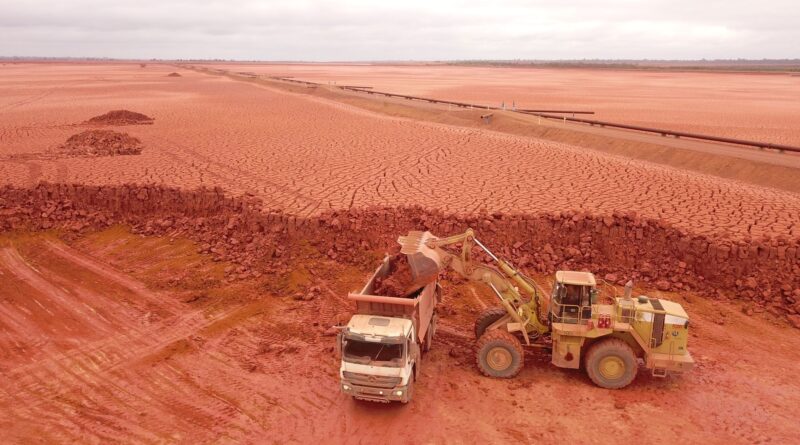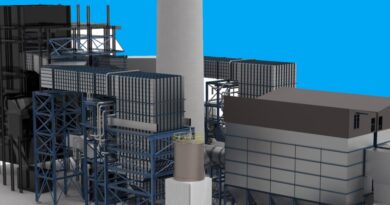A Mine is a Terrible Thing to Waste
From Waste to Wealth – The Evolving Landscape of Tailings Storage Facilities
Tailings Storage Facilities (TSFs) are structures built to store the leftover materials and waste from mining operations, colloquially known as tailings. These facilities are critical components of the mining lifecycle, storing the fine particles and water slurry produced during mineral processing. TSFs represent significant environmental, social and safety risks, particularly if not managed effectively. South Africa, with its vast mining industry, is home to an extensive network of TSFs, some of which are among the largest in the world.
What value do Tailings offer?
The value of TSFs is increasingly prominent in the modern era as technological advances enable the profitable extraction of valuable minerals from historic mine waste. These facilities, once viewed solely as environmental liabilities, are increasingly recognised as valuable ore bodies that can be re-processed using modern extraction methods and technologies to recover previously inaccessible minerals. The practice of re-mining or processing tailings not only creates new revenue streams but also offers environmental benefits by removing historic waste deposits and potentially harmful materials from the landscape. Essentially, make more money and do more good!
What are the risks associated with TSFs?
TSFs pose potentially devastating risks, primarily due to the potential for structural failure or mismanagement, leading to pollution of the surrounding areas. The disastrous collapse of the slimes dam (which is a type of TSF) in Jagersfontein in the Freestate is a recent example of how the mismanagement of TSFs can impact upon the environment and surrounding communities. “The collapse of this slimes dam—a dam designed to store mining by-products—washed away homes and cars, flooding the town with a toxic torrent of mine waste and mud.” Comments Lili Nupen – Co-founder of NSDV Law and Head of environmental and mining law. “The risks associated with TSFs, highlighted by the catastrophic collapse of the Jagersfontein slimes dam, have prompted the proposed amendments to the framework governing TSFs in South Africa” She adds.
The recent collapse of the Sino Metals tailings dam in Chambishi on 18 February 2025 has undermined global safety efforts while exposing a critical paradox: our growing need for mining despite its dangers. The disaster released 50 million liters of acidic waste into the Mwambashi River, cutting water access for 500,000 Kitwe residents and contaminating farmland already stressed by last summer’s severe El Niño drought.
The balance between these risks and benefits is shaping the evolving regulatory landscape, with both international standards and local laws adapting to ensure that TSFs are managed more safely and sustainably.
So what are we doing about it? Enter EIA amendments
The proposed amendments to the Environmental Impact Assessment Regulations, 2014, and the associated Listing Notices (Proposed EIA Regulation Amendments) were published for public comment in December 2024. The Proposed EIA Regulations amendments represent a significant shift in South Africa’s approach to TSF management, reclassifying TSFs from a waste to a resource, reflecting their potential value rather than treating them solely as waste material.
The Proposed EIA Regulation Amendments work in tandem with NEMA by virtue of the National Environmental Management Laws Amendment Act, 2022 (NEMLA4), which amended NEMWA to specifically exclude residue stockpiles and residue deposits from the scope of ‘waste’, providing that it will be regulated, instead, under NEMA.
The amendments propose to include activities related to the expansion of historical mine dumps and the reclamation of a historical mine dump, where a “historical mine dump” is defined as any debris, discard, residues, tailings slimes, slurry, waste rock, foundry sand, beneficiation plant waste, ash or any other product derived from or incidental to a prospecting or mining operation which does not require a right or permit under the Mineral and Petroleum Resources Development Act, 2002 (MPRDA).
MPRDA Proposed Amendments
The regulatory framework governing TSFs is undergoing significant reform. Beyond the Proposed EIA Amendments, proposed amendments to the MPRDA will play a key role in reshaping how historic mine waste is managed.
The MPRDA amendment process has a complex history, beginning with the Mineral and Petroleum Resources Development Bill, 2013 (MPRD Bill 2013). Although the Bill was adopted by Parliament, it was referred back to the National Assembly by the President in 2015 for reconsideration. After years of inactivity, the amendment process regained momentum in August 2024 when the Department of Mineral and Petroleum Resources (DMR) presented its rationale for the proposed changes to the MPRDA.
A central feature of these amendments is the introduction of Section 42A, which establishes a regulatory framework for the management of historic residue stockpiles and deposits (i.e. TSFs) that pre-date the MPRDA. The amendments introduce transitional provisions that enable owners of these TSFs to either amend their existing mining rights or apply for new ones, formally integrating these sites into the MPRDA’s regulatory regime. Should these amendments be passed and enacted into law, TSFs which were established prior to the MPRDA will be regulated by the MPRDA and any reclamation activities in respect thereof may require a mining right.
This shift, while extremely contentious for a whole host of constitutional reasons, aligns with South Africa’s evolving approach to TSFs, recognising them not as waste storage facilities but as valuable secondary ore bodies. Kind of like how Crocs became cool after no-one wanted to be seen in them!
What’s happening across the pond?
Global attention on tailings management intensifies following recent disasters internationally. The Jagersfontein incident, as well as failures at Mount Polley in Canada, and at San Marco and Brumadinho in Brazil, have underscored the critical need for careful management of TSFs.
In 2020, the Global Industry Standard on Tailings Management (GISTM) was launched with the vision of achieving the ultimate goal of zero harm to people and the environment with zero tolerance for human fatality. The GISTM represents the first global standard on TSF management and sets a high bar for the mining industry to attain – integrating social, environmental, local economic and technical considerations for every facility. The GISTM comprises the following six pillars:
- Affected communities
- Integrated knowledge base
- Design, construction, operation and monitoring of the tailings facility
- Management and governance
- Emergency response and long-term recovery
- Public disclosure and access to information
Within these six pillars, the GISTM incorporates 15 Principles and 77 auditable requirements, covering standards and practices over the entire TSF lifecycle.
The Global Tailings Management Institute (GTMI) was launched on 21 January 2025, founded by CEO-led leadership organisation ICMM, the United Nations Environment Programme (UNEP) and the UN-backed Principles for Responsible Investment (PRI) – the same three organisations that established the GISTM in 2020. Based in South Africa, the GTMI will oversee independent assessments of TSF compliance with the GISTM. It provides a platform for sharing best practices and encourages transparency through public disclosure of auditing outcomes.
In addition to the GISTM, the Consolidated Mining Standards Initiative (CMSI), supported by partners like the Copper Mark, ICMM, and the World Gold Council, has released a draft standard, governance model, and assurance process for public consultation. The initiative aims to simplify mining standards and enhance environmental, social, and governance practices across the mining value chain.
A central focus of the CMSI is the responsible management of tailings, with Performance measures – highlighting risk-based systems aligned with global standards, including the GISTM and the Mining Association of Canada’s Tailings Management Protocol. By promoting transparency, independent audits, and public disclosures, the initiative aims to build trust and drive long-term environmental stewardship and sustainable resource development.
The evolving landscape of TSF management reflects a fundamental shift in how the mining industry views these facilities – from mere waste repositories to valuable resources that demand careful stewardship. The convergence of South Africa’s regulatory reforms, global standards like the GISTM, and initiatives such as the GTMI and CMSI marks a pivotal moment in the management and use of TSFs.




